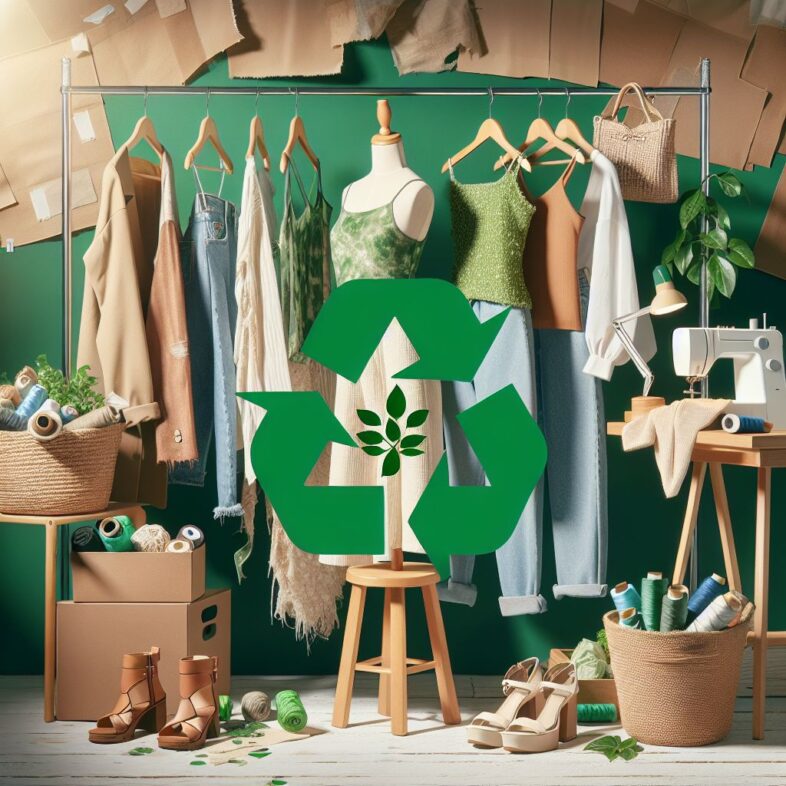We are here to help you select alternative leather material for vegans. We get it – the choice to go vegan often comes from a deep compassion for animals and not wanting to participate in their suffering.
Key Takeaways
- Vegan leather alternatives are made from plants, lab-grown materials, and recycled products.
- Plant-based leathers include options like pineapple, mushroom, and apple leather.
- Vegan leathers reduce animal cruelty and often have a lower environmental footprint.
- Some vegan leathers still use plastics, raising concerns about sustainability.
- Understanding labels and supporting eco-conscious brands can help make informed choices.
The Rise of Alternative Leather Material for Vegans
In recent years, the fashion industry has seen a significant shift towards more sustainable and ethical practices. One of the most notable changes is the rise of vegan leather alternatives. These materials are designed to mimic the look and feel of traditional leather but are made without animal products. This shift is not only driven by consumer demand but also by the fashion industry's need to reduce its environmental impact.
The appeal of alternative leather materials for vegans lies in its ability to offer a cruelty-free alternative to traditional leather. For those who value animal welfare, vegan leather provides a guilt-free way to enjoy the luxurious feel of leather without contributing to animal suffering. Additionally, many vegan leathers are made from renewable resources, making them a more sustainable choice overall.
“Vegan Leather Alternatives | Global …” from www.globalinspirationsdesign.com and used with no modifications.
What Makes a Leather Alternative Vegan?
To be considered vegan, a leather alternative must be free from any animal-derived materials. This means that it cannot contain any leather, suede, or other animal hides. Instead, vegan leathers are made from a variety of materials, including plant-based, synthetic, and recycled options.
Plant-based leathers are made from natural fibers such as pineapple leaves, apple peels, and mushroom mycelium. These materials are often combined with natural resins or binders to create a durable and flexible product. Synthetic vegan leathers, on the other hand, are typically made from plastic-based materials like polyurethane (PU) or polyvinyl chloride (PVC). While these options are animal-free, they may not be as environmentally friendly due to their reliance on fossil fuels.
Recycled material leathers are another option, utilizing post-consumer waste such as plastic bottles or fashion industry scraps. By repurposing these materials, manufacturers can reduce waste and create a more sustainable product.
Let Us Help You Choose the Best Option!
Our Top Rated Options
We use AI to provide the best result, so this will take up to a minute before you will see our suggestions.
Growing Demand for Sustainable Options
The demand for vegan leather alternatives is growing rapidly, driven by a combination of consumer awareness and environmental concerns. As more people become aware of the impact that traditional leather production has on the environment and animal welfare, they are seeking out more sustainable options.
Besides that, many fashion brands are responding to this demand by developing and promoting their own vegan leather products. By offering these alternatives, brands can appeal to a broader audience and position themselves as leaders in sustainable fashion.
Types of Vegan Leather Materials
There are several types of vegan leather materials available today, each with its own unique properties and benefits. Understanding the differences between these materials can help you make an informed choice when selecting vegan leather products.
Plant-Based Leathers
Plant-based alternative leather material for vegans are made from natural fibers and are often seen as the most eco-friendly option. These materials are derived from renewable resources and can be biodegradable, making them a more sustainable choice overall. For those interested in sustainable fashion, the evolution of the M65 field jacket showcases how traditional materials are being adapted for modern eco-friendly use.
For example, Piñatex is a popular plant-based leather made from the fibers of pineapple leaves. This material is not only sustainable but also provides a new source of income for pineapple farmers.
Other plant-based leathers include mushroom mycelium leather and apple leather. These materials offer unique textures and properties, making them suitable for a variety of applications in fashion and beyond.

“Best: Leather and Leather Alternatives …” from earth911.com and used with no modifications.
Let Us Help You Choose the Best Alternative Leather Material Option!
Our Top Rated Options
We use AI to provide the best result, so this will take up to a minute before you will see our suggestions.
Lab-Grown Leather
Lab-grown leather, also known as cultured or biofabricated leather, is an exciting innovation in the world of vegan leather alternatives. This material is created by growing animal cells in a lab, allowing for the production of leather without the need for raising and slaughtering animals. For those interested in sustainable practices, the introduction of a home compostable certification scheme highlights the growing trend towards environmentally-friendly solutions.
Because lab-grown leather is still in its early stages of development, it is not yet widely available. However, it holds great promise for the future of sustainable fashion, offering a cruelty-free and environmentally friendly alternative to traditional leather.
Recycled Material Leathers
Recycled material leathers are made from post-consumer waste, such as plastic bottles or fashion industry scraps. By repurposing these materials, manufacturers can reduce waste and create a more sustainable product. For more information on eco-friendly leather alternatives, visit this resource.
The alternative leather material for vegans often combines recycled materials with other natural or synthetic fibers to create a durable and flexible product. Some recycled material leathers also incorporate plant-based components, further enhancing their eco-friendly credentials.
- Recycled PET leather: Made from recycled plastic bottles, this material offers a durable and water-resistant option for vegan leather products.
- Upcycled leather: Fashion industry scraps and offcuts are repurposed into new leather products, reducing waste and promoting sustainability.
Comparing Vegan Leather to Traditional Leather
When choosing between vegan leather and traditional leather, it's essential to consider several factors, including durability, environmental impact, and cost. Each material has its pros and cons, and understanding these can help you make an informed decision that aligns with your values and needs.
Traditional leather has been a staple in fashion for centuries due to its durability and luxurious feel. However, the process of producing leather is resource-intensive and raises significant ethical concerns regarding animal welfare. Vegan leather alternatives offer a solution, but how do they truly compare?
Durability and Longevity
Durability of alternative leather material for vegans is a critical factor when comparing vegan leather to traditional leather. Traditional leather is known for its strength and ability to withstand wear and tear over time, making it a long-lasting choice for various products.
Vegan leather, on the other hand, varies in durability depending on the materials used. Plant-based leathers like Piñatex and mushroom leather tend to be quite durable, while some synthetic options may not hold up as well over time. It's essential to research the specific type of vegan leather to understand its longevity.
For instance, Piñatex, made from pineapple fibers, is known for its durability and is used by several fashion brands to create long-lasting products.
Ultimately, the durability of vegan leather can be comparable to traditional leather, but it varies depending on the specific material and how it's manufactured.
Environmental Impact
The environmental impact of traditional leather is significant, primarily due to the resources required for raising livestock and the chemicals used in tanning processes. These factors contribute to deforestation, greenhouse gas emissions, and water pollution.
Vegan leather alternatives, especially plant-based and recycled materials, generally have a lower environmental footprint. Plant-based leathers use renewable resources and can be biodegradable, while recycled materials reduce waste and reliance on new raw materials. However, synthetic vegan leathers made from plastics may still pose environmental challenges due to their reliance on fossil fuels and potential for pollution.
“Six animal leather alternatives made …” from www.dezeen.com and used with no modifications.
Cost and Availability
Cost is another important consideration when comparing vegan and traditional leather. Traditional leather products can be expensive due to the labor-intensive process of tanning and finishing. Vegan leathers, particularly innovative plant-based options, can also be pricey, but they often provide a more affordable alternative to high-end traditional leather goods.
Availability of alternative leather material for vegans in products is increasing as more brands embrace sustainable practices. While traditional leather remains widely accessible, the growing demand for eco-friendly options is driving the expansion of vegan leather offerings in the market.
Sustainability and Ethical Benefits
Vegan leather alternatives offer several sustainability and ethical benefits that make them an attractive option for conscious consumers. By choosing vegan leather, you can support practices that prioritize animal welfare and environmental conservation.
Reduction of Animal Cruelty
One of the most compelling reasons to choose vegan leather is the reduction of animal cruelty. Traditional leather production involves the use of animal hides, often from cows, sheep, or goats. This process raises ethical concerns about the treatment and welfare of these animals.
By opting for vegan leather, you can help reduce the demand for animal-derived materials and support cruelty-free practices. Many vegan leathers are created with a focus on minimizing harm to animals, making them a compassionate choice for consumers.
- Vegan leathers eliminate the need for animal farming and slaughter.
- They support the development of alternative materials that prioritize animal welfare.
- Choosing vegan leather sends a message to brands about the importance of ethical practices.
These factors contribute to a more humane and sustainable fashion industry.
Lower Environmental Footprint
Vegan leather alternatives often have a lower environmental footprint compared to traditional leather. This is due to the use of renewable resources, reduced chemical usage, and innovative recycling practices.
- Plant-based leathers utilize agricultural by-products, reducing waste.
- Recycled materials help minimize the need for new raw materials and decrease landfill waste.
- Some vegan leathers are biodegradable, offering an end-of-life solution that reduces pollution.
By choosing vegan leather, you can contribute to a more sustainable and environmentally friendly fashion industry.
Therefore, considering these benefits, vegan leather provides an appealing option for those looking to make more ethical and sustainable choices in their fashion purchases.
Challenges and Criticisms
Despite the many advantages of alternative leather material for vegans, there are also challenges and criticisms to consider. Understanding these issues can help you make a more informed decision when choosing vegan leather products.
One of the main criticisms of vegan leather is its reliance on plastics in some alternatives. Synthetic vegan leathers, such as those made from PU or PVC, are derived from fossil fuels and can contribute to environmental pollution. This raises concerns about the sustainability of these materials.
Another challenge is the manufacturing and scalability of vegan leather. While plant-based and recycled materials offer eco-friendly options, they can be more expensive to produce and may not yet be available on a large scale. This can limit their accessibility and affordability for consumers. However, initiatives like the home compostable certification scheme aim to promote sustainable materials, potentially increasing their availability in the future.
Use of Plastics in Some Alternatives
Many synthetic vegan leathers are made from plastic-based materials like polyurethane (PU) or polyvinyl chloride (PVC). While these options are animal-free, they may not be as environmentally friendly due to their reliance on fossil fuels and potential for pollution. This raises concerns about the sustainability of these materials.
Manufacturing and Scalability Issues
Manufacturing plant-based and recycled vegan leathers can be more resource-intensive and expensive compared to traditional leather production. This can limit their availability and affordability for consumers. As the demand for vegan leather grows, manufacturers are working to improve production processes and scale up their operations to meet consumer needs.
Despite these challenges, the future of vegan leather looks promising. Continued innovation and investment in sustainable materials will likely address these issues, making vegan leather a more accessible and environmentally friendly option for consumers.
Making Informed Choices as a Consumer
As a consumer, it's essential to make informed choices when selecting vegan leather products. By understanding the different types of vegan leather and their benefits, you can choose options that align with your values and support sustainable practices.
Reading labels and certifications can help you identify genuine vegan leather products and understand their environmental impact. Look for certifications from reputable organizations that verify the sustainability and ethical practices of the materials used. For more information on alternatives, check out innovative leather alternatives.
Supporting eco-conscious brands is another way to promote sustainable fashion. Many brands are committed to reducing their environmental footprint and prioritizing ethical practices in their production processes. By choosing to support these brands, you can help drive positive change in the fashion industry.
Reading Labels and Certifications
When choosing vegan leather products, reading labels and certifications is crucial. This helps ensure you're getting a genuine product that aligns with your values. Look for certifications from reputable organizations like the Global Organic Textile Standard (GOTS) or the OEKO-TEX Standard 100. These certifications indicate that the materials used meet specific environmental and ethical standards.
Supporting Eco-Conscious Brands
Supporting brands that prioritize sustainability and ethical practices is another way to promote eco-friendly lifestyles. Many companies are now focusing on reducing their environmental footprint and ensuring fair labor practices. By choosing to purchase from these brands, you help drive demand for sustainable products and encourage more companies to adopt responsible practices.
When shopping, consider researching brands and their commitments to sustainability. Look for those that use transparent supply chains, prioritize renewable materials, and have a clear stance on environmental and social responsibility. By doing so, you can make a significant impact with your purchasing decisions. For example, you might explore options like home compostable certification to ensure the products you buy are environmentally friendly.
Conclusion: The Future of Vegan Leather
Vegan leather is rapidly becoming a popular choice for consumers who value sustainability and animal welfare. As the demand for eco-friendly alternatives continues to grow, we can expect to see even more innovative materials and products enter the market. While challenges remain, the future of vegan leather looks promising, with ongoing advancements in technology and material science paving the way for more sustainable options.
Predictions for Market Growth
The vegan leather market is projected to grow significantly in the coming years, driven by increasing consumer awareness and demand for sustainable products. As more brands and manufacturers invest in research and development, we can expect to see a wider variety of high-quality vegan leather products at competitive prices.
Innovative Materials on the Horizon
Innovations in vegan leather materials continue to emerge, offering exciting possibilities for the future. Lab-grown leather, for example, holds great potential for reducing the environmental impact of leather production while maintaining the desirable properties of traditional leather. Additionally, advancements in plant-based materials and recycling technologies are likely to lead to even more sustainable options.
As these innovations become more widely adopted, consumers will have access to a broader range of vegan leather products, allowing them to make more informed and environmentally conscious choices.
“Vegan leather upholstery fabric …” from marinefabricatormag.com and used with no modifications.
Frequently Asked Questions (FAQ)
Here are some common questions about vegan leather and its benefits:
Is vegan leather really more sustainable than animal leather?
Vegan leather can be more sustainable than traditional leather, especially when made from plant-based or recycled materials. These options often have a lower environmental footprint due to reduced resource use and waste.
However, it's important to note that some synthetic vegan leathers may still rely on plastics, which can contribute to pollution. Therefore, it's essential to research the specific materials and production processes used in vegan leather products.
Can vegan leather be as durable as traditional leather?
Yes, many vegan leathers can be as durable as traditional leather, depending on the materials used. Plant-based leathers like Piñatex and mushroom leather are known for their durability and are used by several fashion brands to create long-lasting products.
- Piñatex: Made from pineapple fibers, known for its durability.
- Mushroom leather: Offers a strong and flexible alternative.
- Recycled PET leather: Durable and water-resistant.
Ultimately, the durability of vegan leather can be comparable to traditional leather, but it varies depending on the specific material and how it's manufactured.
Are there any health risks associated with vegan leather?
Generally, vegan leather does not pose significant health risks. However, some synthetic vegan leathers may contain chemicals used in their production, which could be a concern for those with sensitivities. It's essential to research the specific materials used and choose products that are certified as safe and free from harmful substances.
How can I tell if a product is made from vegan leather?
To determine if a product is made from vegan leather, check the label and product description for information about the materials used. Look for terms like “synthetic leather,” “PU leather,” “plant-based leather,” or specific brand names like Piñatex or mushroom leather. Additionally, certifications from reputable organizations can help verify the authenticity of vegan leather products.
Is vegan leather biodegradable?
Some vegan leathers, particularly those made from plant-based materials, can be biodegradable. These materials break down naturally over time, reducing their environmental impact. However, synthetic vegan leathers made from plastics may not be biodegradable and can contribute to pollution if not disposed of properly.
As the market for vegan leather continues to grow, consumers can expect more biodegradable options to become available, offering a more sustainable choice for eco-conscious shoppers.
As the popularity of alternative leather materials for vegans grows, many vegans are seeking out cruelty-free options for their wardrobe. One such option is the use of synthetic leather, which offers the look and feel of traditional leather without the ethical concerns.
This trend is part of a larger movement towards sustainable fashion, where consumers are increasingly interested in materials that have a lower environmental impact. For instance, pairing these materials with other sustainable items like camouflage pants can create a stylish and eco-friendly outfit.




